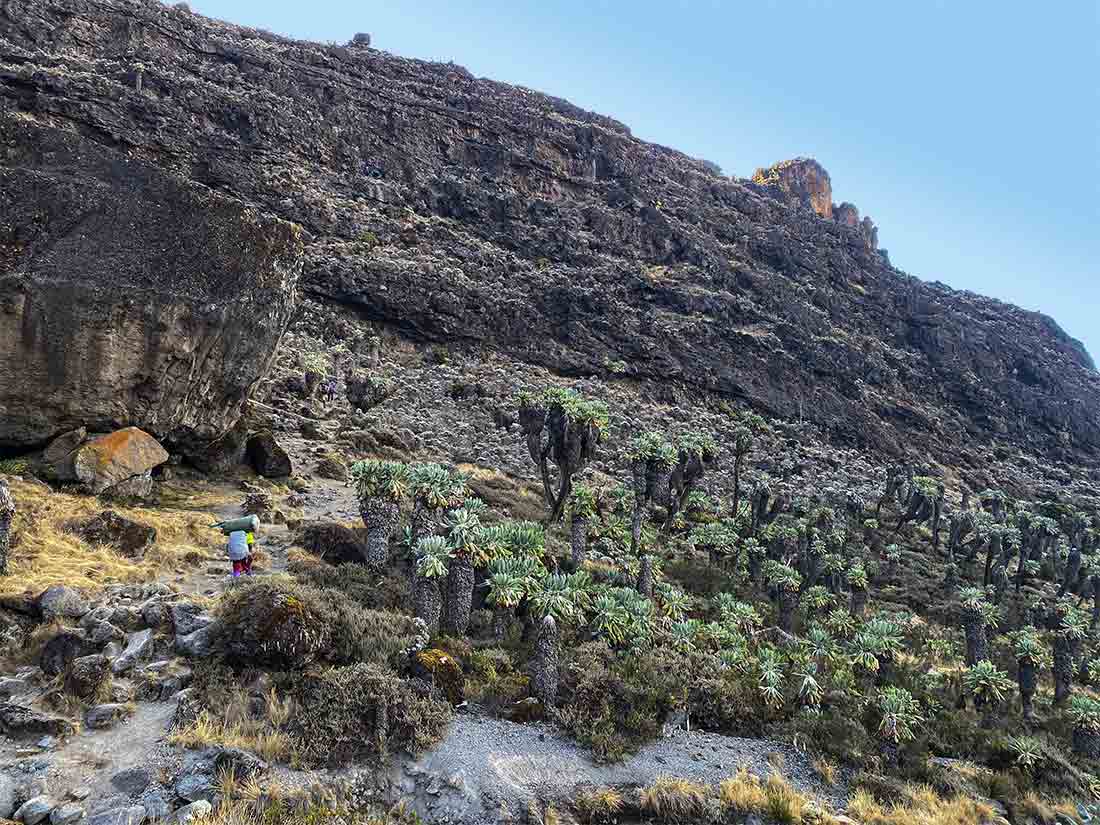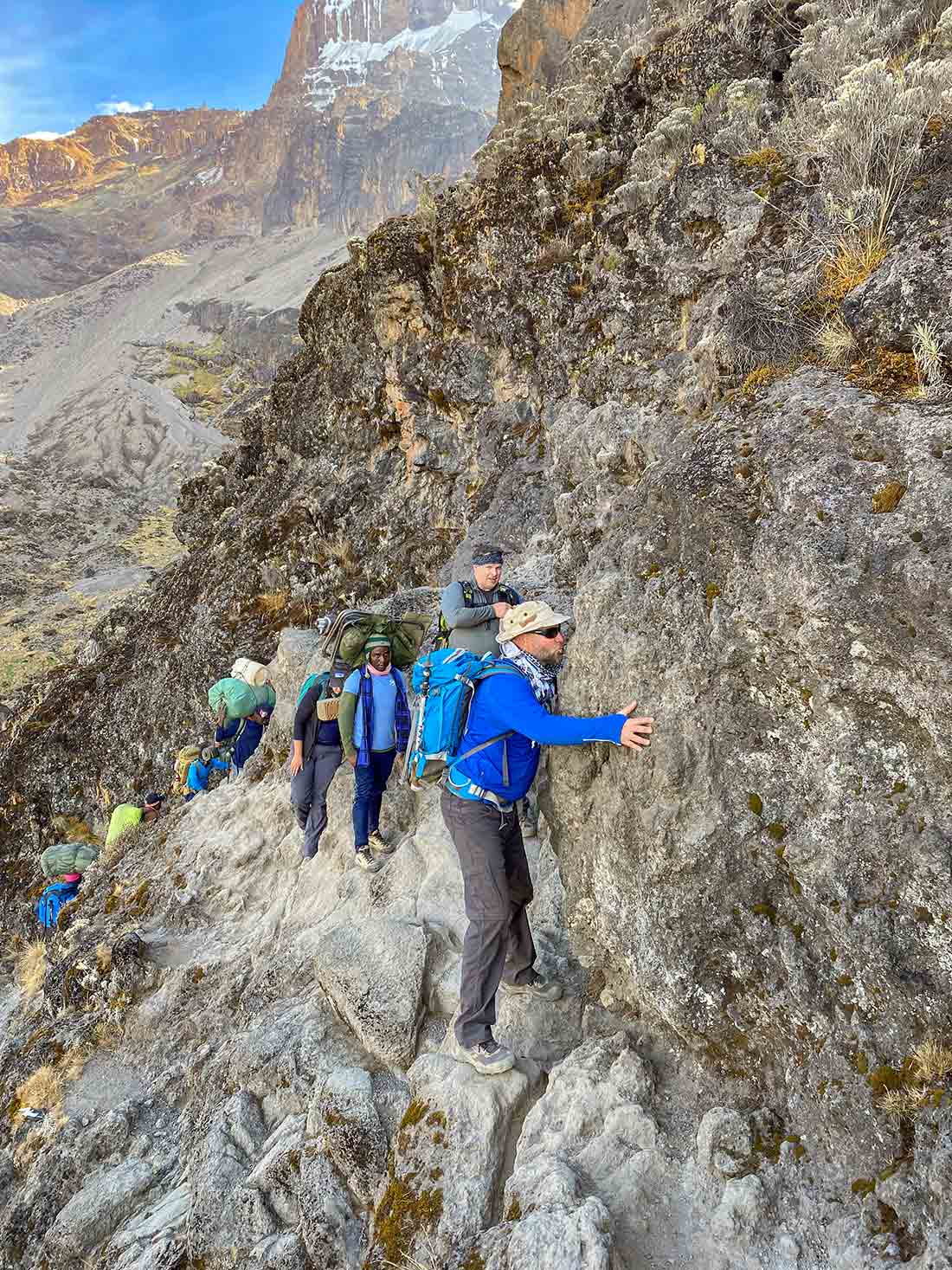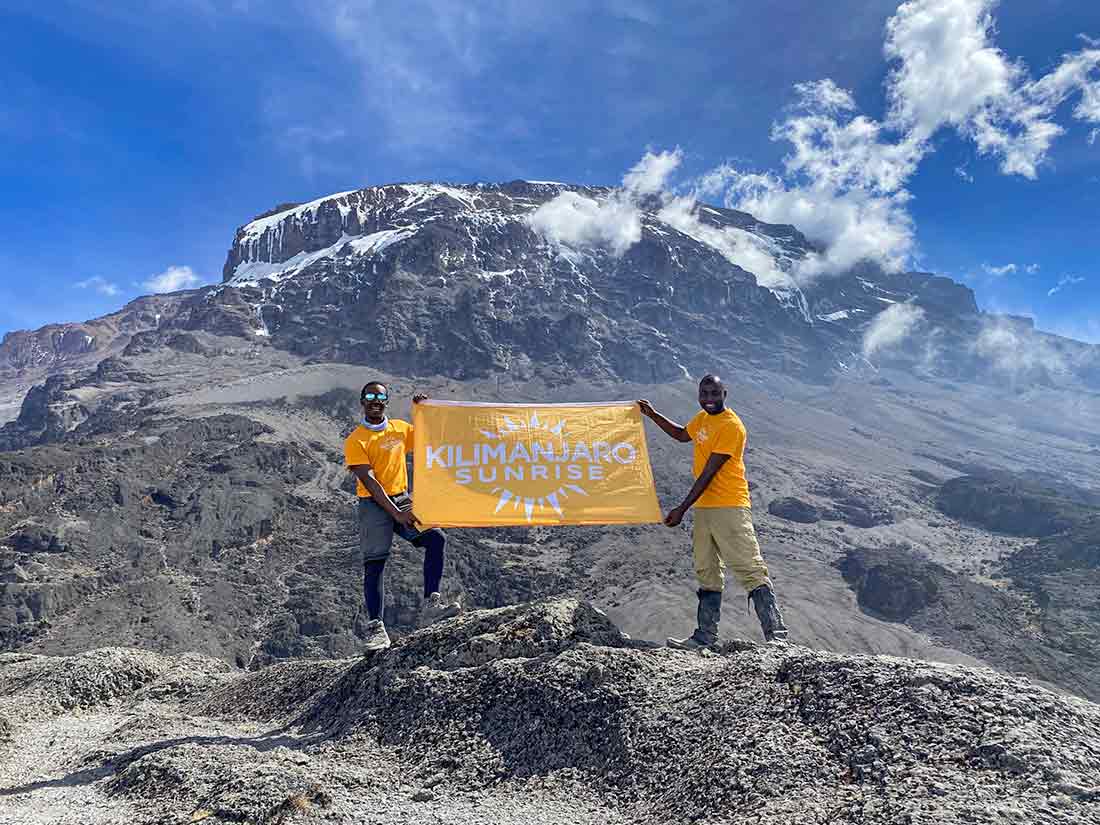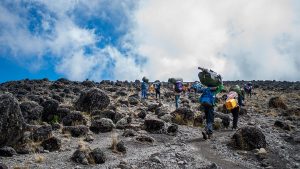One of the items you have most likely come across in doing your Kilimanjaro research is the infamous Barranco Wall. You don’t like heights so now you are hesitant to even go to Kilimanjaro.
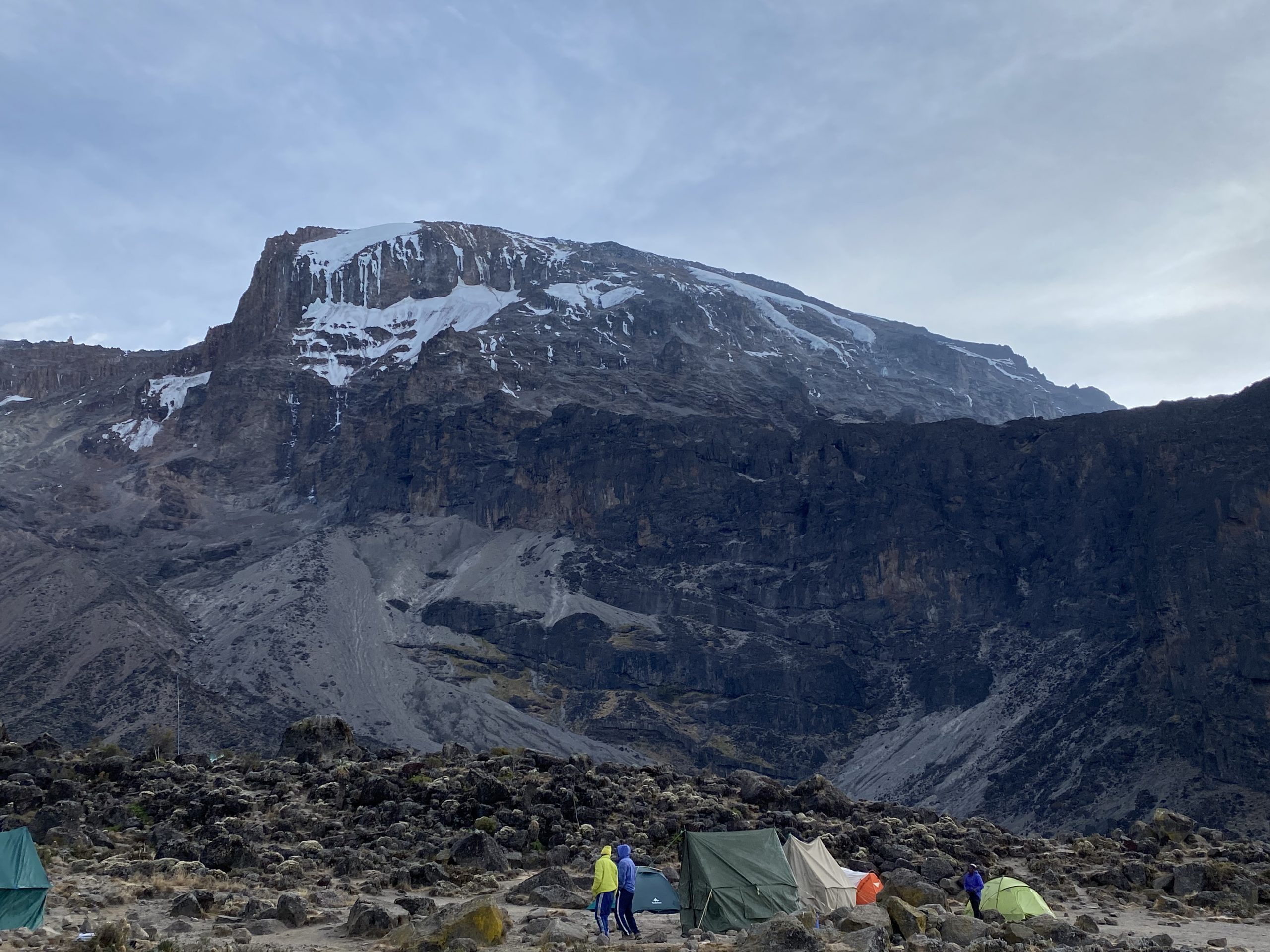
We are here to tell you that the Barranco Wall should not be a deciding factor in whether you go to Kilimajaro. It is both easier than you are imagining and avoidable.
As you descend into the Barranco Valley, you’ll see a rather ominous cliff band on the left side of the Valley. At first glance, this daunting route is the stuff of nightmares. It looks impassable. To further your anxiety, you don’t tackle it until the next morning which means you have all night to worry about it.
Barranco Wall Facts
- The Barranco wall runs Northeast to Southwest and towers over the Barranco Valley camp.
- The Wall is 843 ft tall (257 meters)
- The Wall is also referred to as the Breach Wall or Breakfast Wall since ascending occurs right after eating breakfast.
- Most trekkers actually enjoy the Barranco Wall since it is a change from the long tedious almost flat hiking they have been doing up to this point.
Barranco Wall Routes
You’ll have to ascend the wall if you choose the Lemosho, Machame, Shira, or Umbwe routes. Of those, Kilimanjaro Sunrise guides the Machame and Lemosho.
We do not guide the Shira Route since you drive above the rainforest and start around 11,000 feet. This does give your body enough time to acclimate and reduces your summit success rate to below 50%.
We also do not guide the Umbwe route since it is extremely steep. Umbwe is the worst route on Kilimanjaro. Furthermore, the summit success rate is also below 50%.
You’ll reach the Barranco Wall on day five of the Lemosho route and day four of the Machame route.
Optional Routes
If you are still not convinced to climb the Wall, Then you can still climb Kilimanjaro. You’ll have to do it via the Rongai or Northern Circuit Routes.
Kissing Rock
When you wake up that morning and start moving around, you’ll already see groups heading up the wall. They will look like marching ants as they zig-zag up the Wall.
There is one section, called the Kissing Rock, where their groups get bottlenecked. This is due to the narrow step-over. They will also be taking several photos. This is the most exposed section of the wall. It is easy to traverse as long as you listen to the guides and hold on.
YOSEMITE DECIMAL SYSTEM
Despite the menacing-looking wall, you do not need technical climbing skills or equipment to scale it. In climbing terms, the Wall is considered a class 4 “scramble”. Class 4 comes from the Yosemite Decimal System.
The Yosemite Decimal System (YDS) is a system used for rating the difficulty of outdoor travel—walking, hiking, and climbing. Mountaineers and hikers use it throughout the United States and Canada.
It was first created by members of the Sierra Club in Southern California in the 1950s. It is a better version of previous systems developed in Yosemite Valley.
See the classes explained here:
| Difficulty Level | Type | Description |
|---|---|---|
| Class 1 | Trail walking | This includes everything from paved concrete at the easier end of the level to very steep but well-defined alpine trails. Using your hands for balance even occasionally is usually not necessary. |
| Class 2 | Off-trail hiking | Uneven terrain or very rough trails that require considerable attention to footwork. Hands are possibly used on occasion for balance but not relied upon for significant periods. |
| Class 3 | Scrambling | Hands are now used for upward movement continuously. Holds may be selected and tested but are plentiful and very easy to grip. Third-class terrain is probably never fully vertical. Most people do not need a rope to ascend class 3. An indicator of class 3 is that most people can downclimb it facing outward. |
| Class 4 | Hard scrambling/easy climbing | Hands are used continuously for upward movement. Class 4 is sometimes close to vertical but has very good and abundant holds. Some people may want a rope on class 4 terrain but most will not. A key difference between classes 3 and 4 is that many people feel the need to downclimb class 4 facing inward. |
| Class 5 | Technical climbing | Requires considerable knowledge of ropework, knots, and protection to climb. Most people will want to rappel, not downclimb, a class 5 pitch, especially if it is of significant length. |
The Top
Once you scramble your way to the top of the Barranco Wall, you’ll take a break and enjoy your accomplishment. This is a great spot for shooting photos and videos.
Spend time here celebrating, this will be one of the most memorable spots along your journey.
Final Thoughts
We hope this article about the Barranco Wall helps ease your apprehension about climbing Kilimanjaro. It is a fun section of the route and one you should enjoy versus fear. Just remember, you’ll be fine if you listen to your guides and don’t look down.

